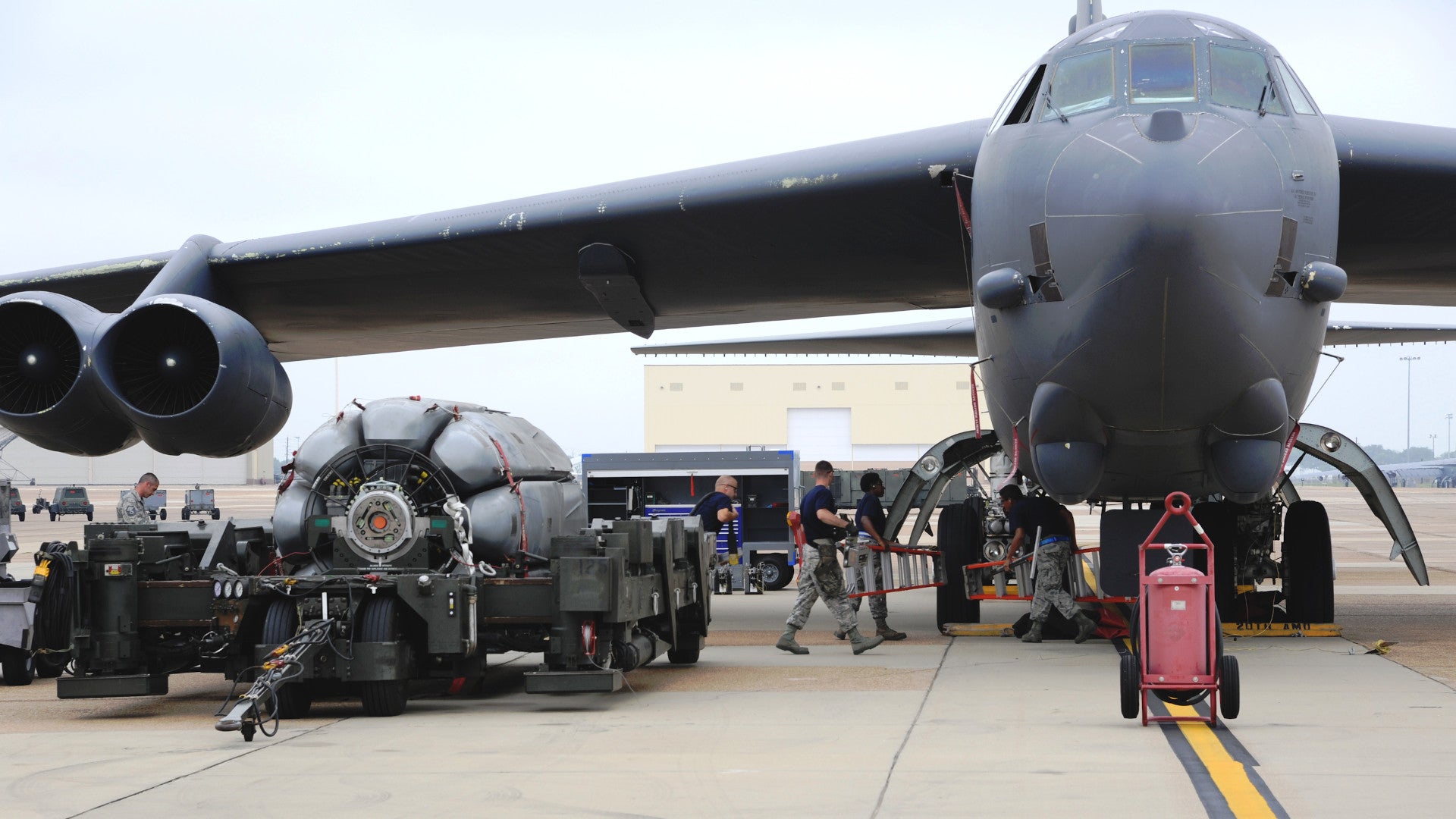During any major conflict in the Pacific region involving the United States, Andersen Air Force Base on Guam would serve as a major hub for U.S. air operations, including acting as a valuable staging location for America’s B-2, B-52, and B-1 bombers. Amid a growing emphasis on security concerns in the Pacific, in general, the Air Force wants to rectify something of a glaring gap in Andersen’s infrastructure.
At present, the base lacks facilities to pre-load Common Rotary Launchers (CRL) for the service’s bombers with cruise missiles and to store the launchers pre-loaded so they can be more readily installed on an aircraft as a single unit. Right now, ground crews can only load missiles one at a time onto launchers already installed in the bombers’ bomb bays, a process that can take nearly half a day to complete.
The Air Force’s most recent budget proposal for the 2021 Fiscal Year includes a request for $56 million to build what it calls a “Stand Off Weapons Complex” at Andersen Air Force Base. The project would include the renovation of an existing structure, Building 51109, as well as the construction of all-new additions, such as “earth-covered magazines” to store the pre-loaded CRLs. The refurbished and new structures will all need to be able to withstand the harsh weather that Andersen regularly experiences, including typhoons with winds gusting up to 195 miles per hour.
“Currently, there are no facilities capable of supporting standoff weapon pre-load operations at Andersen Air Force Base,” the Air Force budget documents explain. “Without this capability, missiles are loaded one at a time, requiring more than 11 hours.”




The section on the proposed infrastructure improvements says that it only takes two and a half hours to install a preloaded CRL onto a bomber. It does not say whether or not loading certain types of missiles onto certain bombers impacts how long the process takes in any way. Also, while the proposed infrastructure improvements are specifically focused on pre-loading the CRLs with stand-off weapons, there’s no reason why the facilities could not be used to load them with other munitions, if required.



Also known as the Common Strategic Rotary Launcher (CSRL), the rotary launchers were originally intended to accommodate various nuclear weapons, including cruise missiles, such as the AGM-86B Air-Launched Cruise Missile and the now-retired AGM-129 Advanced Cruise Missile, and nuclear gravity bombs. The Air Force began developing the launcher in 1981 specifically as a system that would work with its existing B-52 and B-1 bombers, as well as what was then known as the Advanced Technology Bomber (ATB). The ATB program led to the development of the B-2 stealth bomber.
As time has gone on, the Air Force has modified and updated the CRLs to be able to accommodate a wide array of conventional weapons, including the AGM-158 Joint Air-Surface Standoff Missile (JASSM) series and various precision-guided bombs. In November 2019, the service notably retired the conventional variants of the ALCM, the AGM-86C and D versions, leaving JASSM and its subvariants as the only conventional stand-off weapons presently certified for use with the CRL.

The JASSM family, including the now-in-development AGM-158D JASSM-Extreme Range, or JASSM-XR, is likely the be the primary conventional standoff weapon for America’s bombers for the foreseeable future. Last year, Congress also eliminated the requirement for a conventional version of the future Long Range Stand Off (LRSO) cruise missile, the nuclear-armed version of which is still slated to replace the AGM-86B.
At present, each CRL can accommodate eight AGM-86Bs or JASSMs. But even if it takes a shorter amount of time to load the slightly smaller JASSMs versus AGM-86Bs one by one onto certain bombers, the process is still clearly arduous.

It’s also a major undertaking to install the preloaded CRLs. The Air Force notes that it will have to upgrade the roads between the loading facility and dispersal areas where bombers would be parked due to the fact that trailers carrying the fully armed CRLs can weigh nearly 40 tons in total. The service says categorically that the “existing asphalt roadway” they have now “will fail” if they ever tried to tow pre-loaded CRLs across it.



But the Air Force makes clear that the current process, where ground crews at Andersen have to spend nearly half a day to load a bomber’s CRL with cruise missiles, is simply unacceptable. “If this project is not provided, the current inadequate facilities cannot support missions that directly support Pacific Command/Pacific Air Force’s theater stability and positioning for contingency objectives,” the budget request says.
Congress still needs to approve this proposal, as well as the rest of the Air Force’s 2021 Fiscal Year budget request, but it’s hard to see how anyone could deny that 11 hours is just too long loading just one bomber’s CRL full of missiles, especially in a crisis.
Contact the author: joe@thedrive.com
